Mari K. Eder's Blog
November 4, 2025
First to Win Gold

Gretchen Kunigk didn’t step into a pair of skis until she was fifteen years old. But she took to it like a natural. In the 1930s, most skiing was not downhill but instead was primarily ski jumping or cross-country skiing.
Why? Primarily because the notion of a chairlift had yet to be invented.
Gretchen won her first ski races while still in high school and at the University of Puget Sound in Tacoma she joined the ski team. Enroute to a ski race in Sun Valley Idaho she met Don Fraser, a young skier who was an early pioneer of the slalom.
Don was also a veteran of the 1936 U.S. Olympic team and while he thought Gretchen’s style was a bit awkward, she definitely had talent and style.
By 1939 they were married and, together, made the U.S. Olympic Team for the 1940 Olympics. But the advent of World War II meant the Olympics were cancelled that year.
Don joined the Navy and when he left to deploy overseas, Gretchen returned to Sun Vally. She spent the remaining war years helping wounded veterans learn to ski in the winter and to ride horses in the summer.
It was the beginning of a lifelong focus on the importance of rehabilitation.
.stk-0c10848 {margin-bottom:0px !important;}.stk-0449242 {background-color:var(u002du002dstk-global-color-14950, #273891) !important;}.stk-0449242:before{background-color:var(u002du002dstk-global-color-14950, #273891) !important;}.stk-2e540c3 .stk-img-figcaption{text-align:center !important;}.stk-2e540c3 {margin-bottom:0px !important;}.stk-2e540c3 .stk-img-wrapper{width:512px !important;}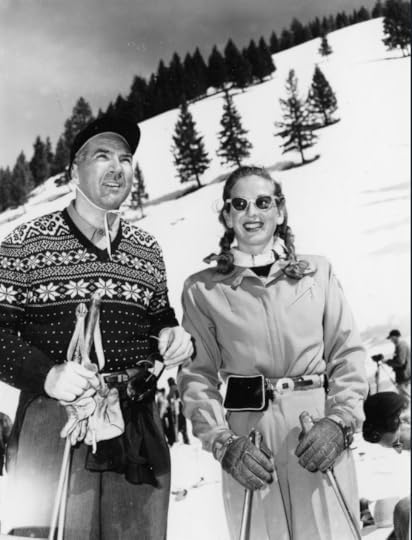
Don and Gretchen Fraser
Then the 1944 Olympics were cancelled as well. Gretchen’s Olympic dreams were over.
When Don returned from the war they moved back to Washington state and opened their own small business. But Don continued to encourage Gretchen to train and prepare for 1948.
Could that even be possible? By 1948 Gretchen thought she was too old—she was twenty-eight. But she made the team again and was mentally ready to face the competition. The competition, mostly Nordic skiers, paid little attention to Gretchen or the other members of the U.S. team.
After all, no American had ever won a Gold Medal in downhill skiing.
.stk-54c9259 {margin-bottom:0px !important;}.stk-aaa21c4 {background-color:var(u002du002dstk-global-color-14950, #273891) !important;}.stk-aaa21c4:before{background-color:var(u002du002dstk-global-color-14950, #273891) !important;}.stk-3f0423d .stk-img-figcaption{text-align:center !important;color:var(u002du002dstk-global-color-14743, #ffd700) !important;}.stk-3f0423d .stk-img-wrapper{width:600px !important;height:468px !important;}.stk-3f0423d .stk-img-wrapper img{transform:scale(1.06) !important;object-fit:contain !important;}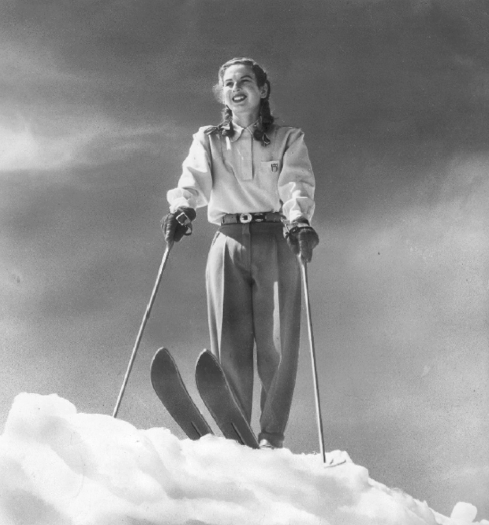
Gretchen loved to ski in Sun Valley
The games were held in St. Moritz—where they will be held again in February 2026, for the first time since Gretchen tested her mettle on those slopes.
Initially, the games were a series of frustrations for the women’s team. They didn’t have a coach, so a member of the men’s team was assigned to assist them each day. The men resented the assignment, and the directions and advice were contradictory and often incomplete.
Finally, a solid coach was brought in.
On race day itself there was another surprise, a new twist to the scoring. For the first time, the scorekeeping would be electronically monitored, with a link between the judges at the base of the mountain and the starting gate at the top.
Gretchen had been first on the initial run, and didn’t feel she had done as well as she should have done. But by the second race she was ready.
She stood in that starting gate, 5’3” and 117 lbs., blond pigtails at the ready. Then the new starting mechanism malfunctioned. Gretchen stood frozen in that starting
position for an unimaginable seventeen minutes before the buzzer sounded. She focused. Calmed her nerves. Then she flew.
Gretchen won that race. Gold Medal. An American first.
The crowd in St. Moritz was shocked. “Who?” Many asked. They’d never heard of her.
.stk-71a2e15 {margin-bottom:0px !important;}.stk-8403cd7-container{margin-top:3px !important;margin-right:3px !important;margin-bottom:3px !important;margin-left:3px !important;min-height:0px !important;max-width:1329px !important;min-width:auto !important;}.stk-8403cd7-inner-blocks{row-gap:0px !important;}.stk-8403cd7 {background-color:var(u002du002dstk-global-color-14950, #273891) !important;padding-top:0px !important;padding-right:0px !important;padding-bottom:0px !important;padding-left:0px !important;}.stk-8403cd7:before{background-color:var(u002du002dstk-global-color-14950, #273891) !important;}.stk-087ec35 .stk-img-figcaption{text-align:center !important;color:var(u002du002dstk-global-color-14743, #ffd700) !important;}.stk-087ec35 {margin-bottom:0px !important;}.stk-087ec35 .stk-img-wrapper{width:600px !important;height:360px !important;}.stk-087ec35 .stk-img-wrapper img{transform:scale(1.06) !important;object-fit:contain !important;}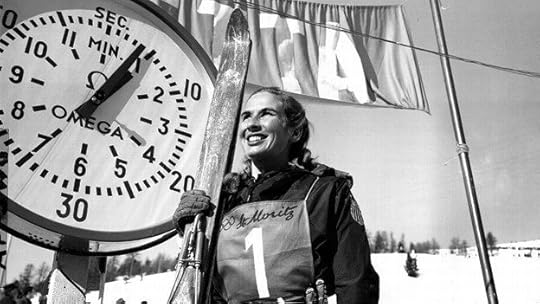
Gretchen Fraser with the clock stopped at 57.7 seconds. Her winning time!
“Too old. Too American. Too inexperienced.” But Gretchen Fraser showed what she could do when she was determined to compete. She could quiet her mind, focus her body and ski full out. A real competitor.
Gretchen won many races after that one spectacular performance but she didn’t repeat her Olympic stardom. She was ready to be home.
But she was still competitive. She rode horses and flew private planes. Gretchen also continued to work in rehabilitation for military veterans, at Fort Lewis, in Sun Valley, and Utah.
She said, “It’s great to win a medal but it is what you do with it afterward—how you use that medal to impact the world—that is even more important.”
.stk-11b1043 {margin-bottom:0px !important;}.stk-7f93a4f {background-color:var(u002du002dstk-global-color-14950, #273891) !important;}.stk-7f93a4f:before{background-color:var(u002du002dstk-global-color-14950, #273891) !important;}.stk-b2d08ce .stk-img-figcaption{text-align:center !important;color:var(u002du002dstk-global-color-14743, #ffd700) !important;}.stk-b2d08ce .stk-img-wrapper{width:600px !important;height:468px !important;}.stk-b2d08ce .stk-img-wrapper img{transform:scale(1.06) !important;object-fit:contain !important;}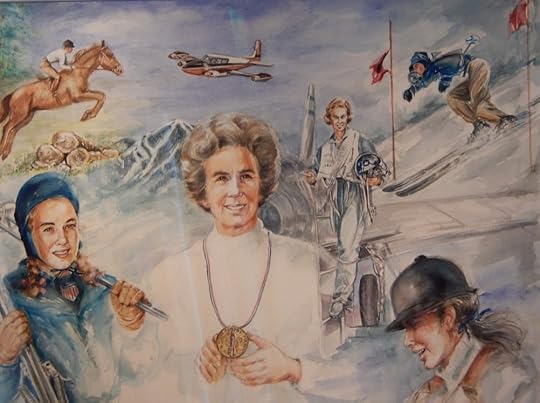
This painting of Gretchen Fraser hangs in the restaurant ‘Gretchen’s’ at the Sun Valley Resort
Enjoyed this post? Get my newsletter delivered to your inbox so you don’t miss the next one! I send out one mailing a month most months and promise zero spam.
The post First to Win Gold appeared first on Benson's ReView.
October 7, 2025
What’s in a Name?

September 20th was a day that all of nature stood at attention to honor and support the ceremony naming the street in front of the 108th Precinct in Long Island City for one of New York’s own – NYPD detective Mary “Mae” Foley.
It was a day of sunshine and warmth, and jam-packed with words of praise for Mae’s service with the 108th.
Mae served as a sworn officer with the NYPD from 1923 until her retirement on January 1st, 1946. She not only witnessed all of the major national events of the 20th century, but she was also a part of them.
The ceremony took place on a warm late summer day, under a cloudless sky, with a crowd gathered to pay tribute to one of their own.
Mae’s grandson Bob, and grandson Johnny’s wife Donna, along with numerous other family members were on hand for the event. So were officers from that precinct and others who turned out to honor her. There were members of the mounted unit, dog handlers, and chiefs who took the time on a beautiful Saturday morning to be there to recognize her.
.stk-0c10848 {margin-bottom:0px !important;}.stk-0449242 {background-color:var(u002du002dstk-global-color-14950, #273891) !important;}.stk-0449242:before{background-color:var(u002du002dstk-global-color-14950, #273891) !important;}.stk-2e540c3 {margin-bottom:0px !important;}.stk-2e540c3 .stk-img-wrapper{width:512px !important;}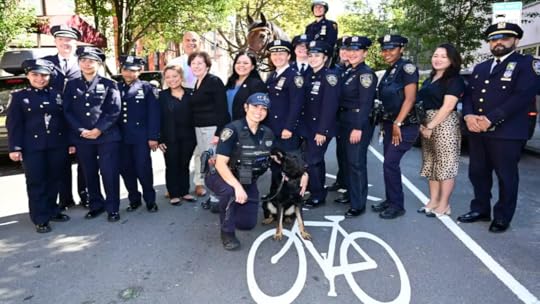
Widowed early, Mae continued to serve while raising young daughters, Florence and Grace, in the late 1930s and 1940s.
Her career as an officer began with service on the ‘Masher’ Squad in Manhattan, taking down men who preyed on women riding the subway. She later transferred to the 19th Precinct on the Upper West Side and supported efforts to end Prohibition.
But her career took off when she transferred to Queens, where one of Mae’s first assignments was to serve as bait to lure out a fearsome serial killer.
She also took part in many operations that involved dealing with criminals up front and in a personal manner. She had been trained in jiu jitsu, like all other policewomen at the time, and disarmed more than one potential attacker.
Mae also was a key figure in witness protection during the trial of the notorious mobster “Lucky Luciano” and later she went undercover in the New York Nazi movement, reporting on the organizations plans and criminal intentions.
She loved her family, her community and her home, the 108th Precinct.
Even in retirement she remained active, advocating for better pay and benefits for her colleagues still in uniform. She also kept an open door for her colleagues. Her grandsons often saw patrol cars or unmarked sedans parked in front of her house. Detectives and uniformed officers alike often sought her advice and guidance.
.stk-54c9259 {margin-bottom:0px !important;}.stk-aaa21c4 {background-color:var(u002du002dstk-global-color-14950, #273891) !important;}.stk-aaa21c4:before{background-color:var(u002du002dstk-global-color-14950, #273891) !important;}.stk-3f0423d .stk-img-figcaption{text-align:center !important;color:var(u002du002dstk-global-color-14743, #ffd700) !important;}.stk-3f0423d .stk-img-wrapper{width:600px !important;height:468px !important;}.stk-3f0423d .stk-img-wrapper img{transform:scale(1.06) !important;object-fit:contain !important;}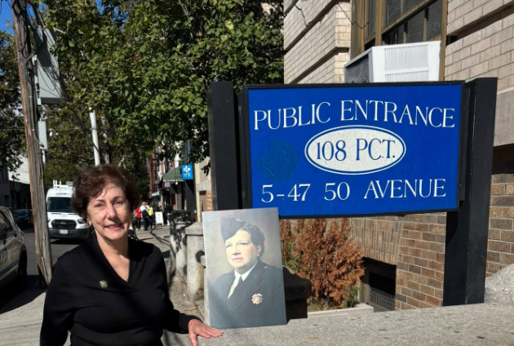
This street naming effort was championed by NYPD Deputy Chief Raymond Porteus, who was moved to act when he read Mae’s story in The Girls Who Fought Crime.
That day, Chief Porteus said, “She proved that strength and compassion aren’t opposites. They are partners.” Others spoke as well, including Erica Buckewicki, head of the Policewomen’s Endowment Association (PEA) and Mae’s grandson, Bobby.
All were visibly moved by the opportunity to honor her and her trailblazing career, her work to ensure new opportunities for future generations and her love of her home and family – both her children and grandchildren and her police family.
.stk-71a2e15 {margin-bottom:0px !important;}.stk-8403cd7-container{margin-top:27px !important;margin-right:27px !important;margin-bottom:27px !important;margin-left:27px !important;min-height:0px !important;}.stk-8403cd7-inner-blocks{row-gap:0px !important;}.stk-8403cd7 {background-color:var(u002du002dstk-global-color-14950, #273891) !important;padding-top:0px !important;padding-right:0px !important;padding-bottom:0px !important;padding-left:0px !important;}.stk-8403cd7:before{background-color:var(u002du002dstk-global-color-14950, #273891) !important;}.stk-087ec35 .stk-img-figcaption{text-align:center !important;color:var(u002du002dstk-global-color-14743, #ffd700) !important;}.stk-087ec35 {margin-bottom:15px !important;}.stk-087ec35 .stk-img-wrapper{width:600px !important;height:468px !important;}.stk-087ec35 .stk-img-wrapper img{transform:scale(1.06) !important;object-fit:contain !important;}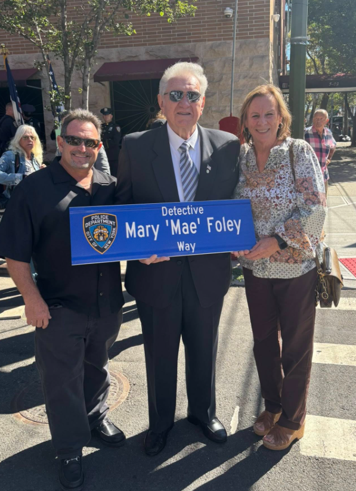
L-R Johnny Carr (Mae’s great grandson), Bob Carr (Mae’s grandson), and Donna Carr (wife of John Carr)
Hers is not just a name on a sign. It’s a promise fulfilled. Fidelis Ad Mortem.
.stk-11b1043 {margin-bottom:0px !important;}.stk-7f93a4f {background-color:var(u002du002dstk-global-color-14950, #273891) !important;}.stk-7f93a4f:before{background-color:var(u002du002dstk-global-color-14950, #273891) !important;}.stk-b2d08ce .stk-img-figcaption{text-align:center !important;color:var(u002du002dstk-global-color-14743, #ffd700) !important;}.stk-b2d08ce .stk-img-wrapper{width:600px !important;height:468px !important;}.stk-b2d08ce .stk-img-wrapper img{transform:scale(1.06) !important;object-fit:contain !important;}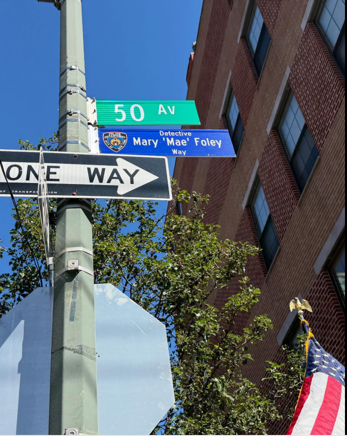
Enjoyed this post? Get my newsletter delivered to your inbox so you don’t miss the next one! I send out one mailing a month most months and promise zero spam.
The post appeared first on Benson's ReView.
September 25, 2025
Photos from the Mary “Mae” Foley Street Co-Naming Ceremony
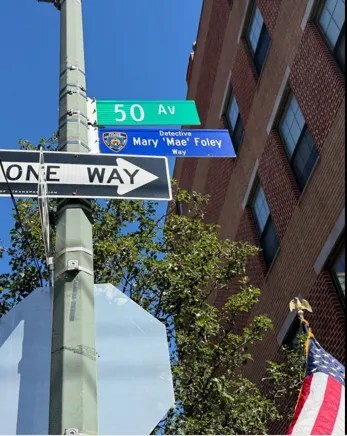
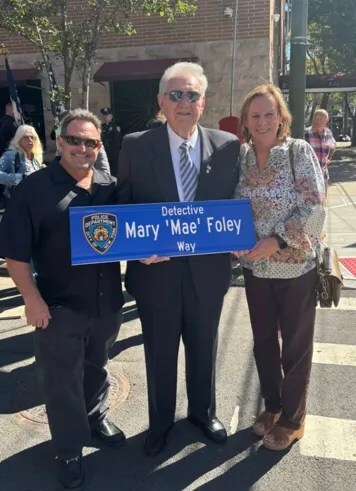
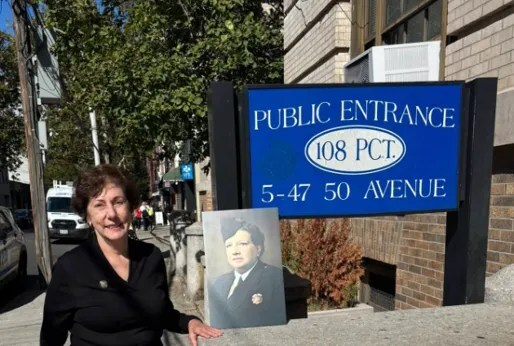
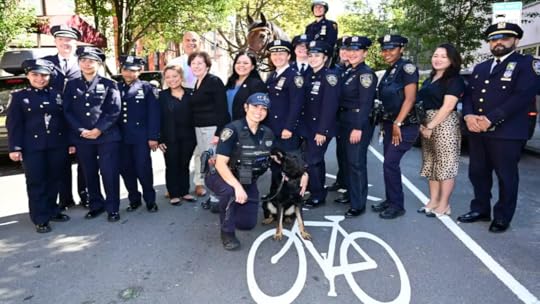
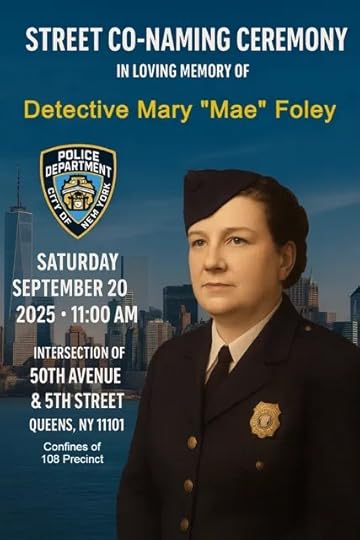
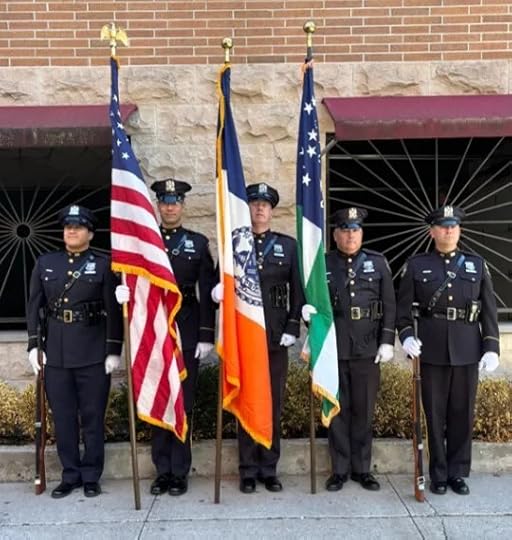
The post Photos from the Mary “Mae” Foley Street Co-Naming Ceremony appeared first on Benson's ReView.
September 2, 2025
Prep for the Olympics

It’s time—the Winter Olympics are only six months away and while athletes are finalizing their plans, routines, and their mental readiness, the host cities are also going into high gear to welcome them and the millions of visitors who will come to be part of the exciting Olympic experience.
In 2026, the Winter Olympics will be hosted by two Italian cities, Milan and Cortina. The last time the Olympics were held in Cortina was in 1956, when Tenley Albright made history, becoming the first American woman to win gold in figure skating.
Her story was incredible.
She overcame childhood polio at a time when the crippling disease was at its height, learning not only how to walk again but to dominate on the ice and drive towards her Olympic dream.
Then she followed another dream – to become a doctor.
This year, women’s figure skating will once again be one of the most anticipated events at the winter games. They will be held not in Cortina, though, but at Milan’s Ice-Skating arena.
When twenty-year-old Tenley Albright arrived a few weeks before the 1956 games, she was ready. She just wanted a little more practice and time to adjust to the altitude. Instead, she faced a new challenge.
That year the ice-skating arena was outdoors, and subject to random pockets of ice water, pooling from the bright sun, uneven surfaces whipped up by the wind, and bumpy ice in the shade.
Just two weeks before the games were due to begin, Tenley tripped on a divot in the ice and fell. Her sharp left skate cut into her right leg, slicing the leather of the boot, and into her skin, through the muscles, down to the bone.
Her father, a surgeon, flew in from the U.S. the next day and performed a miraculous operation.
It still seemed to be an impossible dream that she could compete. Tenley missed the opening ceremonies. A week later, she managed to make it through the compulsory figures but knew she had to be perfect for the free skate event, scheduled near the end of the games.
And she was. Tenley was brilliant.
There was no indication of pain in her face, no twinge as she landed on that right foot. She soared joyfully and triumphantly through the air, and the crowd hummed along with her music, inspiring her further, she recalled.
.stk-0c10848 {margin-bottom:0px !important;}.stk-0449242 {background-color:var(u002du002dstk-global-color-14950, #273891) !important;}.stk-0449242:before{background-color:var(u002du002dstk-global-color-14950, #273891) !important;}.stk-2e540c3 {margin-bottom:0px !important;}.stk-2e540c3 .stk-img-wrapper{width:512px !important;}
It was magical. Now the magic beckons again.
For twelve days in February 2026, the world will be watching. Figure skating is more precise now than it was in 1956, with a greater emphasis on complex moves and jumps, with athletes and their coaches scrutinizing minute elements of their performances while working on mental conditioning and focusing on preventing injuries.
Approximately 2,900 athletes will compete in the games, nearly evenly split between women and men. While the U.S. can send approximately two hundred athletes, Team USA can send up to eighteen figure skaters:
.stk-290ab61 {--stk-icon-list-icon-size:7px !important;padding-top:16px !important;padding-right:16px !important;padding-bottom:16px !important;padding-left:16px !important;margin-bottom:2px !important;}3 women’s singles3 men’s singles3 pairs teams (6 athletes)3 ice dance teams (6 athletes)The spirit that Tenley Albright displayed in 1956 is certain to be in play, with any number of contenders showcasing that same elegance, tenacity, and strength while in pursuit of their own brand of absolute perfection.
The competition will take place under LED lights with precision judging and that intense Olympic pressure which so often results in the participants reaching farther, higher, more determined than ever to do even better than their previous best.
One of Tenley Albright’s most often quoted sentiments goes as follows: “If you aren’t falling down, you aren’t trying hard enough.”
.stk-54c9259 {margin-bottom:0px !important;}.stk-aaa21c4 {background-color:var(u002du002dstk-global-color-14950, #273891) !important;}.stk-aaa21c4:before{background-color:var(u002du002dstk-global-color-14950, #273891) !important;}.stk-3f0423d .stk-img-figcaption{text-align:center !important;color:var(u002du002dstk-global-color-14743, #ffd700) !important;}.stk-3f0423d .stk-img-wrapper{width:600px !important;height:468px !important;}.stk-3f0423d .stk-img-wrapper img{transform:scale(1.06) !important;object-fit:contain !important;}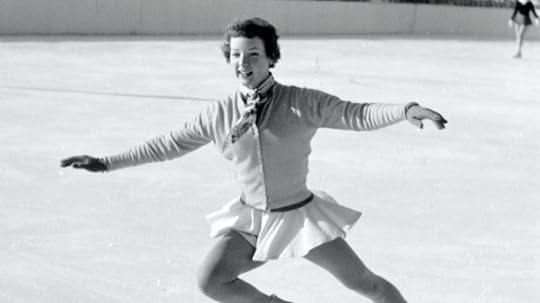
In just six months, all of those contenders who have been seeking this opportunity for much of their lives will be out to prove they have tried, fallen, and persevered in pursuit of Olympic Gold.
Tenley Albright’s story will be featured in the upcoming book The Girls Who Beat the Odds. To be released in 2026.
Enjoyed this post? Get my newsletter delivered to your inbox so you don’t miss the next one! I send out one mailing a month most months and promise zero spam.
The post Prep for the Olympics appeared first on Benson's ReView.
July 24, 2025
Strategic Communication: Key to Deterrence and Defense
Strategic Communication is the lens, the filter. and the focus. It is the way and the means that gives purpose and vision to all command-led mission communications. Audiences who hear the communications but cannot discern the purpose and vision cannot make sense of why the U.S. military is doing something and how its actions connect to the words. In 2009, the Department of Defense defined strategic communication as a focused effort to understand and engage key audiences to manage conditions favorable to advancing U.S. interests, policies, and programs, using coordinated themes, messages, and products synchronized with all elements of national power. Since then the process has continued to evolve while focusing on operations in the information environment and the broader applications of communications.
The post Strategic Communication: Key to Deterrence and Defense appeared first on Benson's ReView.
July 1, 2025
Did Women Just Not Exist?

.stk-5609c94-container{background-color:var(--stk-global-color-14950, #273891) !important;}.stk-5609c94-container:before{background-color:var(--stk-global-color-14950, #273891) !important;}.stk-910f2a1 .stk--svg-wrapper .stk--inner-svg svg:last-child, .stk-910f2a1 .stk--svg-wrapper .stk--inner-svg svg:last-child :is(g, path, rect, polygon, ellipse){fill:var(--stk-global-color-14743, #ffd700) !important;}.stk-c05c2ca .stk-block-text__text{font-size:22px !important;color:var(--stk-global-color-23574, #fcfcfc) !important;}@media screen and (max-width: 1023px){.stk-c05c2ca .stk-block-text__text{font-size:22px !important;}}“Our lives begin to end the day we become silent about things that matter.”Martin Luther King Jr.
I’m always concerned about the accuracy of the historical research I’ve done, and in particular, what I’m seeing in the quality of some of the articles I’m reading now.
I worry about not just quality but veracity, slant, personal prejudices, politics, and the absence of solid facts.
Over the past several years, I’ve discovered just how much a distortion or omission of fact can literally alter the perception of past events, in effect changing history and ultimately impacting our understanding of it.
The World War II codebreakers were widely credited with having helped to shorten the war by one to two years through their work. In October 1945, the US Congress lauded their work. Rep. Clarence Hancock said, “I believe our cryptographers … in the war with Japan did as much to bring the war to a successful and early conclusion as any other group of men.”
The more than 10,000 women codebreakers weren’t mentioned.
Yet those Army and Navy women who worked in Project Ultra built the Bombe machines that broke the codes and operated them at their classified locations in Washington. Their service was held prisoner behind the wall of silence that their oaths required.
Not one of them leaked the story of their contributions until the mid-1990s, when, at a reunion for the Navy WAVES who built the Bombe, they were told they could talk about their service.
.stk-0c10848 {margin-bottom:0px !important;}.stk-0449242 {background-color:var(u002du002dstk-global-color-14950, #273891) !important;}.stk-0449242:before{background-color:var(u002du002dstk-global-color-14950, #273891) !important;}.stk-2e540c3 {margin-bottom:0px !important;}.stk-2e540c3 .stk-img-wrapper{width:512px !important;}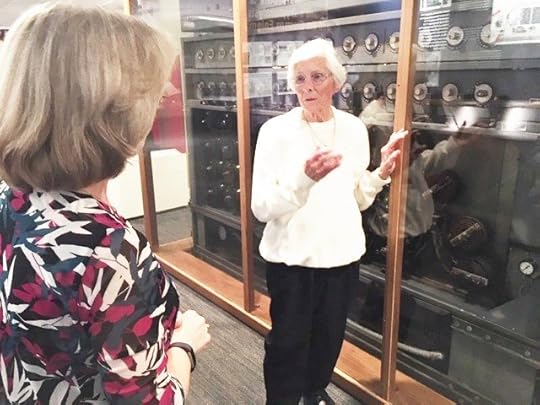
Betty Robarts at the Cryptologic Museum at Fort Meade, MD. It was the first time she had seen a completed Bombe machine.
Betty Robarts was twenty years old when she joined the WAVES, one of those women who helped build the massive machine that broke codes. She said to me, “I only wish I could have told my Mom and Dad.”
In 1976, the US Air Force announced that it would begin accepting women for pilot training, stating it was the first time the Air Force would permit women to fly. Just one problem—that wasn’t true.
While over 25,000 women volunteered to fly with the Women Air Service Pilots (WASP) during WWII, only 1,100 flew. Thirty years after the war, their contributions, their service, and their story were forgotten. The Air Force announcement about training women pilots was made without any concept of the WASP contributions.
The veterans rose up in protest over the Air Force announcement. The service backtracked. And suddenly, the veterans found themselves popular.
Several efforts were undertaken to correct the record. The WASP were formally made part of the Air Force in 1977. The veterans received honorable discharge certificates and their World War II Victory Medals. They were also awarded the Congressional Gold Medal for their service.
The Medal reads: “The first women in history to fly American military aircraft.”
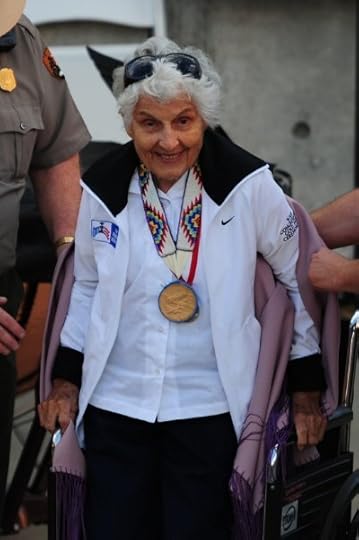
Millie Rexroat at an Independence Day celebration in 2010, wearing her Congressional Gold Medal
The WASP pilots were proud of their service.
Olga Mildred “Millie” Rexroat flew with the WASP, earning her wings in class 44-7. She was the only Native American woman to fly with the WASP. In her later years, she too was an advocate for supporting and preserving the legacy of the WASP pilots.
I’ve recently read several articles about then-Major Charity Adams and the 6888 Central Postal Directory Battalion. This is the only all-female, all-African American unit to deploy overseas in World War II.
Their story, too, has come surging to the forefront over the past several years— surprising, educating, and ultimately resulting in numerous celebrations of their service.
In 1995, retired Lt. Col. Charity Adams commented at a Black History Month event, “Well, it certainly has taken a long time for us to be remembered.” And now they have not only been remembered but also honored. The 6888th received the Congressional Gold Medal on April 29, 2025, at the US Capitol.
.stk-9bc4b57 {margin-bottom:0px !important;}.stk-c15aff0 {background-color:var(u002du002dstk-global-color-14950, #273891) !important;}.stk-c15aff0:before{background-color:var(u002du002dstk-global-color-14950, #273891) !important;}.stk-086de28 {margin-bottom:0px !important;}.stk-086de28 .stk-img-wrapper{width:56% !important;height:576px !important;}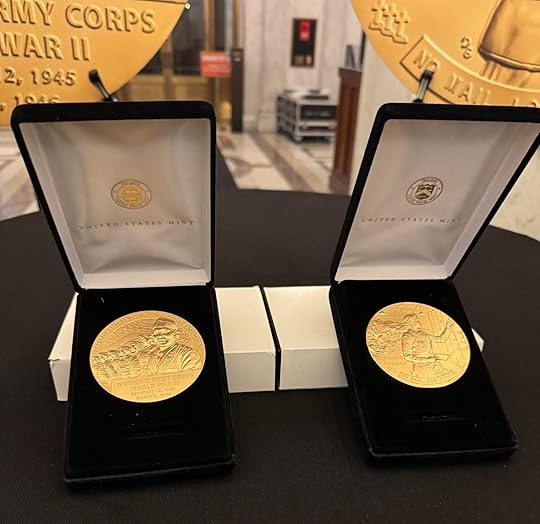
Photograph of the Congressional Gold Medals issued at the US Capitol
In 2021, accomplished British military historian Lyn Macdonald passed away. She was passionate about recording untold stories of the Great War, interviewing some 3,000 veterans, and reading the diaries and letters of many more.
Her books about WWI told the stories of ordinary soldiers, nurses, and others. She didn’t just write about politicians and statesmen, generals and battles. She told stories about ordinary people, ones that had been overlooked or forgotten. She once commented that their stories left “a great unhewn seam of memory and information on the war.”
.stk-a3aab2e {margin-bottom:0px !important;}.stk-9b31a3b {background-color:var(u002du002dstk-global-color-14950, #273891) !important;}.stk-9b31a3b:before{background-color:var(u002du002dstk-global-color-14950, #273891) !important;}.stk-f09237a {margin-bottom:0px !important;}.stk-f09237a .stk-img-wrapper{width:580px !important;}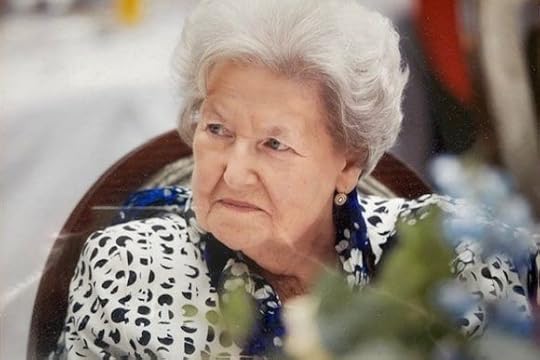
Photograph: Mica Murphy/Penguin Books
Renowned British military historian Antony Beevor agreed, noting that historians should be writing about “Everyone caught up in war, including of course women and children.”
A recent article I found about military women appeared in print without footnotes or acknowledging sources. It just seemed off. A little digging proved that to be true.
Misidentified photos, incorrect statistics, and careless errors permeated the piece, rendering its purpose, perhaps to provide more insight into a heretofore little-known story, null and void.
Another recent piece completely misrepresented the contributions of women war correspondents. It is concerning to see the attempts not just to denigrate women’s accomplishments but to erase them altogether.
If an essay only references other articles and books written in the past few years, it may be far removed from the truth of what happened. It is like the old saw about how a comment passed down the line word of mouth from the sergeant to the private is greatly changed by the time it reaches the final recipient. And if one of those sources is Wikipedia or a Wikimedia Commons site, an article has a greater chance of unintended errors.
That’s why it’s important to go back to the original documents whenever possible, to official reports, to autobiographies, and to newspapers. While they can be wildly inaccurate themselves, those ‘first drafts of history’ can often provide insights that other sources cannot. They can certainly provide an understanding of views at the time.
.stk-23a8d7b {margin-bottom:0px !important;}.stk-8a855da {background-color:var(u002du002dstk-global-color-14950, #273891) !important;}.stk-8a855da:before{background-color:var(u002du002dstk-global-color-14950, #273891) !important;}.stk-b32b731 {margin-bottom:0px !important;}.stk-b32b731 .stk-img-wrapper{width:580px !important;}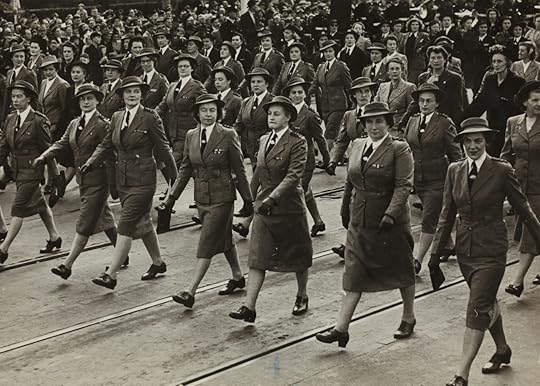
Nurses Marching, 7th Australian General Hospital, Sister Isabel Erskine Plante, World War II, circa 1942
Learning these veterans’ history is also important for a cultural reason—many of the women I’ve read about (and written about) were real trailblazers, role models, and significant for what they accomplished in each of their fields despite the time in which they lived, the societal norms and the barriers they faced. We need to have them in front of us, for their example, their strengths, and because they never gave up.
In January 2022 a high school senior wrote an opinion piece for The Washington Post asking the question, “So, did women just not exist?”
She was referring to the near absence of women in her American history textbook. In an admittedly unscientific survey, she asked a number of her classmates to name important women in American history.
Nearly half of those she interviewed couldn’t name even one.
One could argue that this is because culture and institutions long made it difficult for women to achieve success in public life or business (or in the military). But it simply isn’t true that they weren’t there.
.stk-21993ad {margin-bottom:0px !important;}.stk-2437fc4 {background-color:var(u002du002dstk-global-color-14950, #273891) !important;}.stk-2437fc4:before{background-color:var(u002du002dstk-global-color-14950, #273891) !important;}.stk-374953a {margin-bottom:0px !important;}.stk-374953a .stk-img-wrapper{width:580px !important;}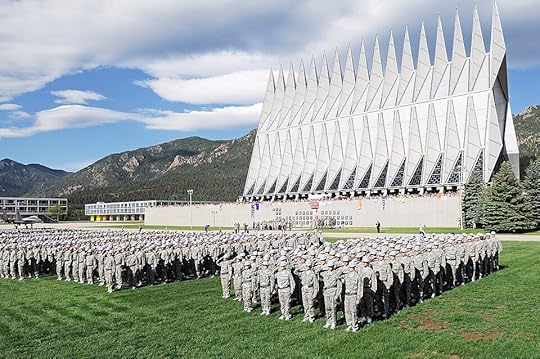
More than 1,300 basic cadets salute June 26 during their first reveille formation at the U.S. Air Force Academy in Colorado Springs, Colorado.
Last year, I spoke to an Air Force officer who served two tours at the US Air Force Academy, where she taught English. She said to me, “I never taught anything about women who served in the military or used any books by women. It simply didn’t occur to me to do so. I’m going to fix that.”
We cannot be silent about the contributions of half of the population in this country to the American ideals and values we hold dear. Next generations are counting on civics and history education to show them not only what has been hard fought and won, but also what is possible to achieve in life. They should not be discouraged by attempts to reinforce stereotypes through omission or downplaying the contributions of women and minorities.
That high school senior said, “Here in 2021, young women are told we can make history and achieve anything. But that’s difficult to believe when history curricula marginalizes or ignores women’s accomplishments. When these facts are omitted from compulsory education, it becomes more difficult for students to see how gender-based inequities remain entrenched, which in turn will make it harder for us to escape them.”
Getting the complete story right matters. Silence will not stand.
Enjoyed this post? Get my newsletter delivered to your inbox so you don’t miss the next one! I send out one mailing a month most months and promise zero spam.
The post Did Women Just Not Exist? appeared first on Benson's ReView.
June 3, 2025
No Ceremony, No Parade

June 1945 ushered in a sudden adjustment to the concept of peace. Major Charity Adams and the 855 soldiers in her unit, the 6888 Central Postal Directory Battalion, were all contemplating a return home to America and to civilian life.
There were still challenges for, as Charity stated in her autobiography, One Woman’s Army, the sudden shift to peacetime had an effect.
Following VE Day and the lessening of mission pressure, more of her soldiers felt their individual and personal problems moving to the forefront.
The mission to sort the backlog of diplomatic mail in Rouen, France, was completed, and the soldiers were then sent to Paris.
.stk-0c10848 {margin-bottom:0px !important;}.stk-0449242 {background-color:var(u002du002dstk-global-color-14950, #273891) !important;}.stk-0449242:before{background-color:var(u002du002dstk-global-color-14950, #273891) !important;}.stk-2e540c3 .stk-img-wrapper{width:512px !important;}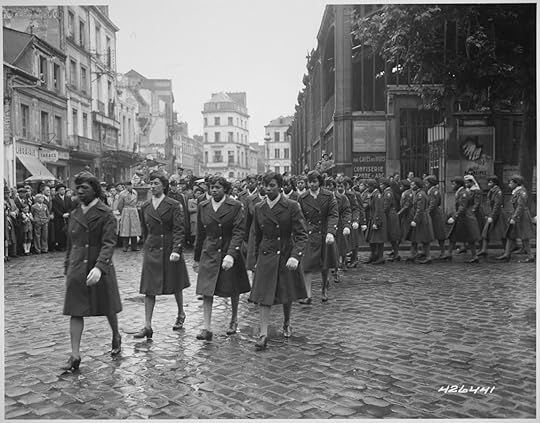
Gradually, the unit would begin to lose personnel. But Charity did all she could to be certain that the troops were aware that the war in the Pacific was still being waged.
In 1946, the unit was deactivated at Fort Dix, New Jersey. The women went home, and the postwar era began.
There was no ceremony, no parade.
For years, many of the 6888 veterans stayed in touch, met for an annual reunion, and reminisced with each other about their time in Europe. The women in that organization didn’t expect awards. They didn’t believe they deserved much news coverage. Like the majority of their fellows in the “Greatest Generation,” they were modest and didn’t talk much about their service.
Their story remained virtually unknown until 2018, when a small group of volunteers led by retired Army Colonel Edna Cummings began working, and working hard, to have them recognized for their accomplishments.
A meritorious unit citation was issued by the Army, a memorial to the unit was built at Fort Leavenworth, Kansas, a documentary film followed, and then the push for a Congressional Gold Medal for the 6888 succeeded. It passed Congress in 2022.
The medal was finally presented on April 29th at the U.S. Capitol.
Over 300 descendants of 6888 members were in attendance, including Charity Adams’ two children, Stanley Earley III and Judith. Many family members carried photographs and mementos of their loved ones. The House of Representatives leadership all spoke and presented the medal itself.
.stk-54c9259 {margin-bottom:0px !important;}.stk-aaa21c4 {background-color:var(u002du002dstk-global-color-14950, #273891) !important;}.stk-aaa21c4:before{background-color:var(u002du002dstk-global-color-14950, #273891) !important;}.stk-3f0423d .stk-img-figcaption{text-align:center !important;color:var(u002du002dstk-global-color-14743, #ffd700) !important;}.stk-3f0423d {margin-bottom:0px !important;}.stk-3f0423d .stk-img-wrapper{width:600px !important;height:350px !important;}.stk-3f0423d .stk-img-wrapper img{transform:scale(1.06) !important;object-fit:contain !important;}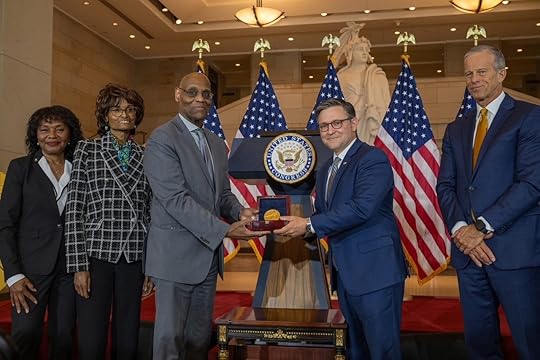
There are now two Post Offices named for soldiers from the 6888 Central Postal Battalion. The Indiana Hunt-Martin Post Office was dedicated in Buffalo, New York, in 2023. The Millie Dunn Veasey Post Office was dedicated in Raleigh, North Carolina, on May 9, 2025.
A major exhibit from the National World War II Museum in New Orleans is now traveling the U.S. for the next three years. It recognizes the contributions of the 6888 and those of the other 350,000 women who served in the U.S. military during the war.
They cannot be forgotten now. They will not be forgotten now.
The 6888 Central Postal Directory Battalion was the only unit to touch soldiers in every other unit in Europe.
.stk-9bc4b57 {margin-bottom:0px !important;}.stk-c15aff0 {background-color:var(u002du002dstk-global-color-14950, #273891) !important;}.stk-c15aff0:before{background-color:var(u002du002dstk-global-color-14950, #273891) !important;}.stk-7f20313 .stk-img-figcaption{text-align:center !important;color:var(u002du002dstk-global-color-14743, #ffd700) !important;}.stk-7f20313 {margin-bottom:0px !important;}.stk-7f20313 .stk-img-wrapper{width:600px !important;height:350px !important;}.stk-7f20313 .stk-img-wrapper img{transform:scale(1.06) !important;object-fit:contain !important;}
Enjoyed this post? Get my newsletter delivered to your inbox so you don’t miss the next one! I send out one mailing a month most months and promise zero spam.
The post No Ceremony, No Parade appeared first on Benson's ReView.
May 16, 2025
Photos from the 2025 WIN Summit
May 8, 2025
War Ends in Europe

On May 8th, 1945, the war ended in Europe.
While people were dancing in the street in Times Square, New York City Policewoman Mae Foley was on her way downtown. She’d taken the 7 train into Midtown from Queens that morning but didn’t realize she wouldn’t be able to move through the cheering crowds.
Finally, she maneuvered back down the stairs and onto the crowded subway. As the train pulled out, the roar began to subside. She’d have to visit the department stores on Fifth Avenue another day.
.stk-0c10848 {margin-bottom:0px !important;}.stk-0449242 {background-color:var(u002du002dstk-global-color-14950, #273891) !important;}.stk-0449242:before{background-color:var(u002du002dstk-global-color-14950, #273891) !important;}.stk-2e540c3 .stk-img-wrapper{width:512px !important;}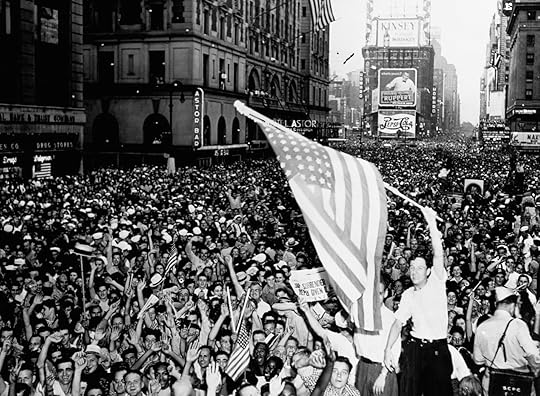
Not that she wasn’t thrilled that the war had ended. She was. And grateful and relieved.
Thankfully, the world would know peace again.
Plus, the post-war changes meant that the NYPD could begin a recruiting campaign; they needed new officers now more than ever. And, her son-in-law Fred would return home and daughter Florence would be happily planning their next move to a place of their own.
And Mae? She felt the winds of change blowing like a gale. Everything was going to change and quickly.
By the summer of 1945, she’d been a policewoman with the NYPD for twenty-two years—longer if you counted her five years of volunteer service with the Women’s Police Reserve. Maybe it was time to think about retirement.
Just a few days later, the 108th precinct was buzzing with the news that the Supreme Commander of the Allied Expeditionary Force, General Dwight D. Eisenhower himself, would be coming to New York in June for a victory parade.
.stk-54c9259 {margin-bottom:0px !important;}.stk-aaa21c4 {background-color:var(u002du002dstk-global-color-14950, #273891) !important;}.stk-aaa21c4:before{background-color:var(u002du002dstk-global-color-14950, #273891) !important;}.stk-3f0423d .stk-img-figcaption{text-align:center !important;color:var(u002du002dstk-global-color-14743, #ffd700) !important;}.stk-3f0423d {margin-bottom:0px !important;}.stk-3f0423d .stk-img-wrapper{width:600px !important;height:350px !important;}.stk-3f0423d .stk-img-wrapper img{transform:scale(1.06) !important;object-fit:contain !important;}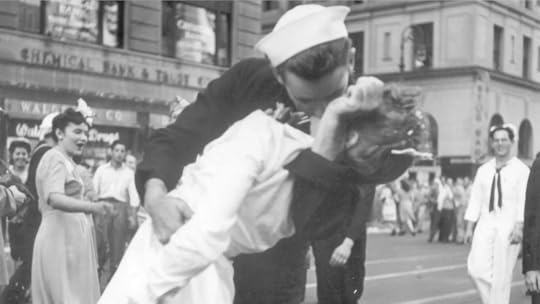
All hands on deck; everyone would be on duty that day, uniforms pressed, brass polished, and everyone moving out smartly.
Mae looked forward to that event, even if it meant long hours on her feet in those tight shoes. But still… the promise of retirement’s freedom nagged at her.
Mae Foley loved to travel. And she missed it.
With so many cruise ships being commandeered by the U.S. Navy during the war, her cruising days had taken a hiatus lasting nearly five years. Not to mention that even if she could have booked a cruise, it would not have been heading to Europe.
She’d taken a couple of brief trips during the war, but it just wasn’t the same.
Now, if she retired, she could go when she pleased, where she pleased. That was definitely something to celebrate.
But first, maybe she’d take a practice vacation and drive down to Florida for the winter. She’d sit on the beach and look out over the ocean. Be a snowbird who wasn’t on a schedule. She wouldn’t plan to return to the city until the daffodils bloomed.
Or maybe she could find her way back to Bermuda. She loved the Caribbean and would definitely be ready to return there. But the war with Japan was still looming over the country, and that dream would have to wait.
Once she arrived home again, Mae got out her maps and her well-worn travel planner and began to fill in a few details for the possibilities of that dream.
Maybe it was time.
Enjoyed this post? Get my newsletter delivered to your inbox so you don’t miss the next one! I send out one mailing a month most months and promise zero spam.
The post War Ends in Europe appeared first on Benson's ReView.
April 29, 2025
Photos from the U.S. Congressional Medal of Honor Ceremony for the 6888
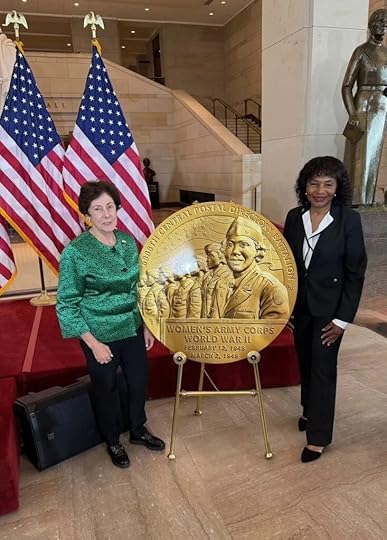
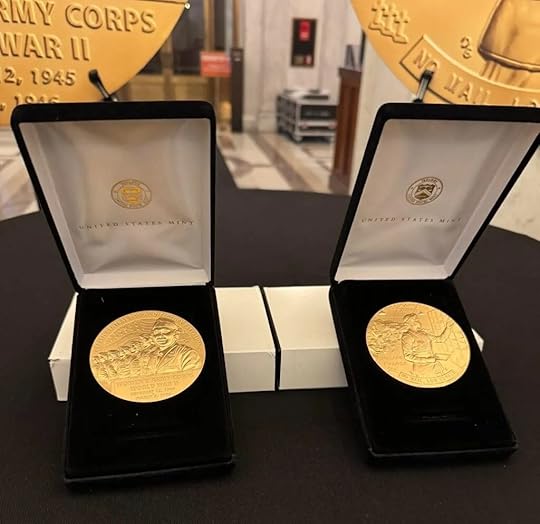
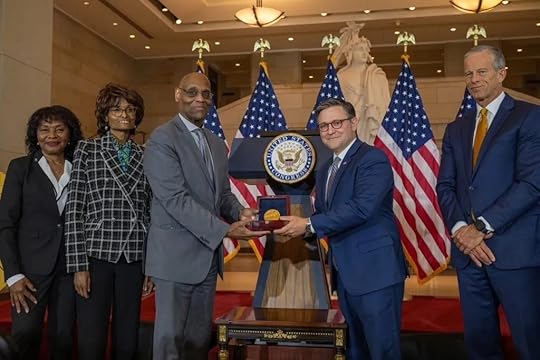
The post Photos from the U.S. Congressional Medal of Honor Ceremony for the 6888 appeared first on Benson's ReView.







